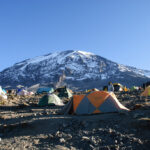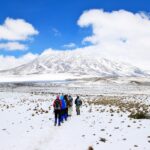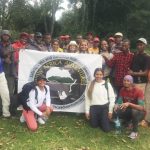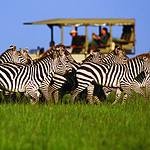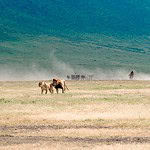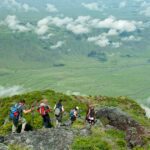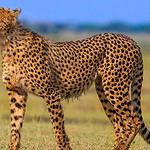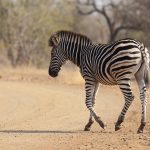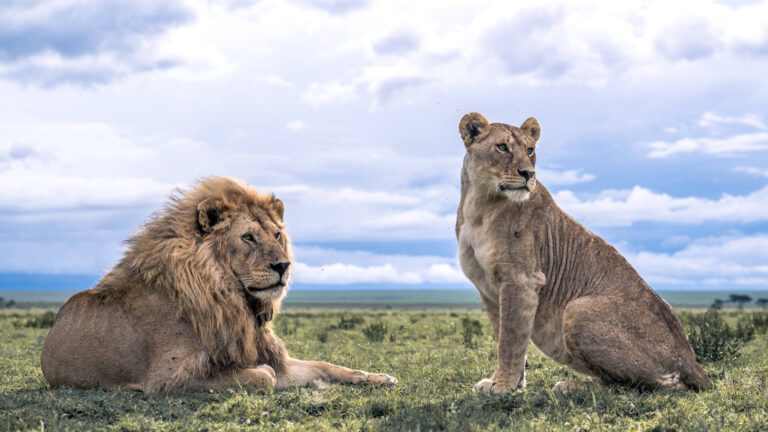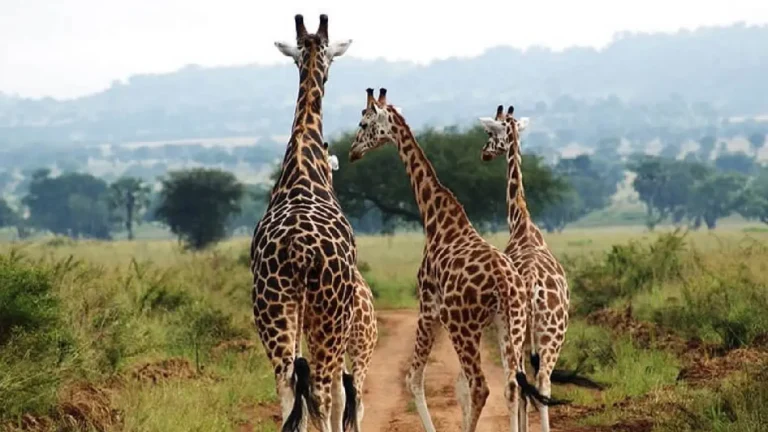Table of Contents
Birding Tours in Tanzania: From Lilac‑breasted Rollers to Fish Eagles
Tanzania’s diverse habitats—from wetlands to woodlands—make it a birder’s paradise. A Tanzania birding safari offers chances to explore over 1,100 species, including showpieces like the Lilac‑breasted Roller and African Fish Eagle.
1. Why a Tanzania Birding Safari?
A Tanzania birding safari offers:
- Exceptional bird diversity (500+ species in a day)
- National parks with varied ecosystems
- Expert guides specialized in ornithology
- Travel during migrations (Palearctic & inter-Africa)
- Opportunities to spot rare and endemic birds
You’ll participate in walks, boat trips, and night drives designed to uncover Tanzania’s avian marvels.
2. Top Birding Destinations
Serengeti Ecosystem
The classic Tanzania birding safari route where grassland species like Secretary Birds and Bustards thrive, and marshes attract waterbirds.
Lake Manyara & Ngorongoro
Here, a Tanzania birding safari includes electrifying lifetimers—flamingos, storks, and in forests, species like Turacos and mousebirds.
Tarangire National Park
Famed for Baobab-lined rivers, this region on a Tanzania birding safari yields large flocks of weavers, rollers, and raptors.
Ruaha National Park
A Tanzania birding safari in Ruaha reveals woodland birds, including the endemic Ruaha Chat and Racket-tailed Roller.
Eastern Arc Mountains & Udzungwa
Mountain forests are part of highland Tanzania safari trips—find elusive species like Mt. Kilimanjaro endemics.
Selous Game Reserve
On a Tanzania safari, boat rides showcase Kingfishers, Fish Eagles, and African Skimmers along rivers.
Rift Valley Lakes
Bird-rich lakes near Arusha on a Tanzania safari are hotspots for flamingos, pelicans, and migratory waders.
3. Signature Species Highlights
- Lilac‑breasted Roller: dazzling pink and turquoise show-stopper spotted on your Tanzania safari in open woodlands
- African Fish Eagle: majestic, heard and seen near lakes—highlight of any Tanzania safari
- Turaco species: in forests—Violet-crested and White-cheeked found with Tanzania safari
- Shoebill (rare): occasionally sighted on specialized Tanzania safari tours
- Secretary Bird: iconic raptor seen during signature Tanzania safari drives
- Mounted Lark: endemic to the plains, seen on focused Tanzania safari
4. Best Seasons to Go
Plan your Tanzania birding safari keeping seasons in mind:
- June–October: dry season ideal for mammal and bird sighting
- November–March: wet season brings in Palearctic migrants (warblers, storks, bee-eaters)
- March–June: shoulder months yield breeding behaviors—optimal Tanzania birding safari time
5. Typical Safari Itinerary (7–10 Days)
Here’s how a structured Tanzania birding safari might unfold:
- Day 1–2: Lake Manyara – Begin spotting Flamingos, Helmeted Guineafowl
- Day 3–4: Ngorongoro Crater – High-altitude species, forest edge birds
- Day 5–6: Serengeti – Grasslands for rollers, bustards
- Day 7: Tarangire – Weaver nesting, raptors
- Day 8–9: Ruaha – Forest birds, raptors, endemics
- Day 10: Selous (optional) – Riverview birding for kingfishers, fish eagles
This Tanzania birding safari format maximizes habitat diversity and species sightings.
6. Birding Guides & Photography
The best Tanzania birding safari employs expert local guides who:
- Use scope & call techniques
- Know seasonal breeding/migration spots
- Offer bird IDs, maps, and quick prints
- Assist with photography (tripods, camera settings)
You’ll learn to capture colorful plumage and behavioral shots throughout your Tanzania birding safari.
7. Accommodation Options
During a Tanzania birding safari, choose from:
- Eco-lodges near lakes (Manyara, Ngorongoro)
- Mobile tented camps in Serengeti grasslands
- Scenic river lodges in Tarangire
- Rustic bush camps in Ruaha
- Rift Valley eco-lodges for forest birders
Many Tanzania birding safari lodges offer early meals, portable breakfasts, and camera-friendly spaces.
8. Conservation & Community Impact
Your Tanzania birding safari supports:
- Habitat protection (national reserves)
- Local guide empowerment
- Community income through lodge stays
- Research—bird monitoring & data-gathering
Bird-focused tourism on a Tanzania birding safari enhances local stewardship and economy.
9. Travel Tips & Packing
For a fruitful Tanzania birding safari, remember:
- Neutral clothing and insect repellent
- Camera, binoculars, telescope
- Field guide (e.g., Birds of East Africa)
- Refillable water bottle, sunscreen, hat
- Sandals or hiking shoes
Prepare to log and photograph bird sightings during your Tanzania safari.
10. Extended & Specialized Tours
Consider adding to your Tanzania safari:
- Bird photography workshops
- Village bird walks
- Canopy walkway tours (Arusha National Park)
- Boat birding trips (Mikumi, Selous)
- Specialist trips for rare bird watchers
These deepen the Tanzania safari experience.
A Tanzania safari blends natural beauty with unforgettable wildlife sightings. From Lilac‑breasted Rollers and Fish Eagles to secretive forest species, Tanzania offers unmatched avian diversity.
Plan your birdwatching adventure today—this Tanzania safari journey will transform your appreciation of both birds and Africa’s wild landscapes.

